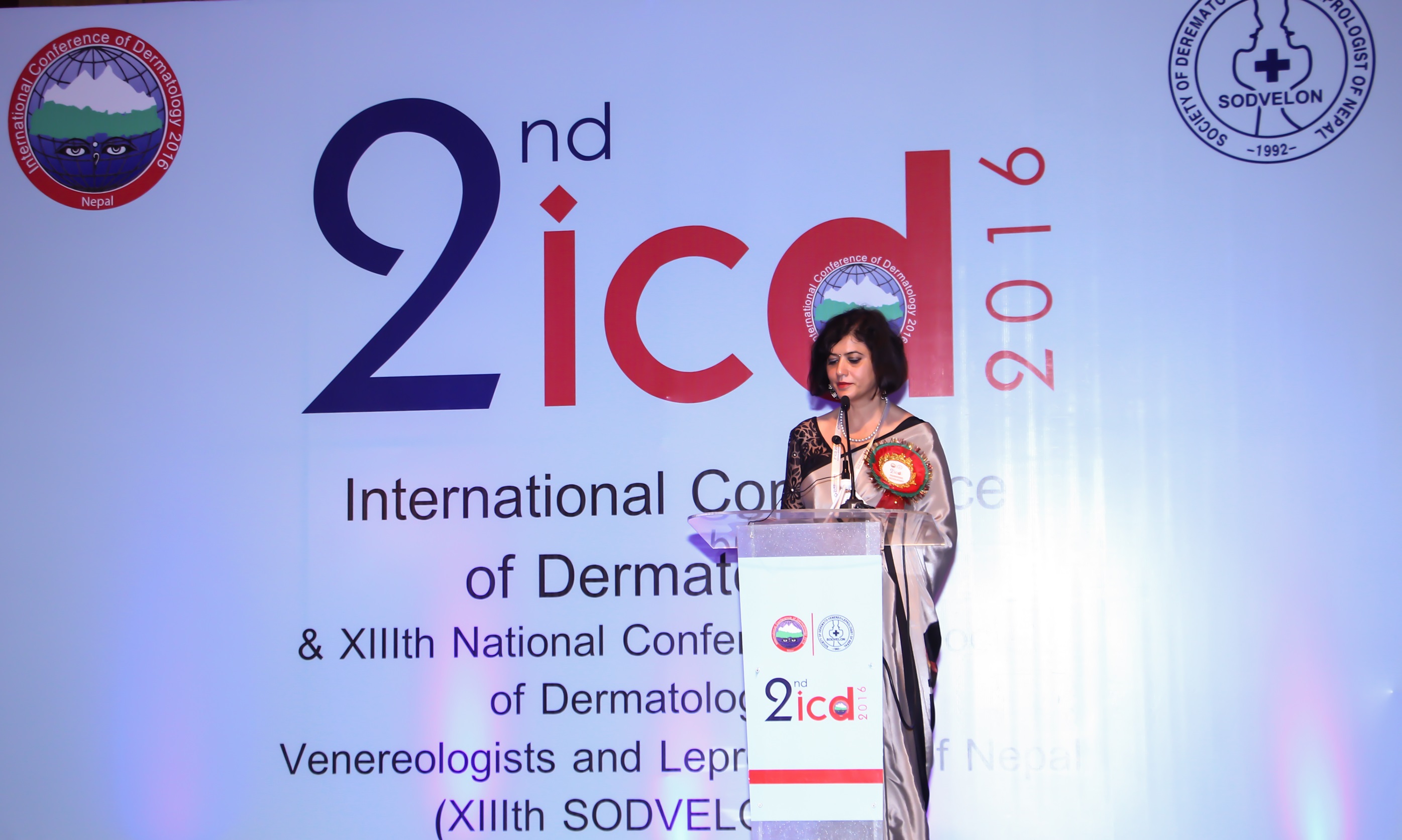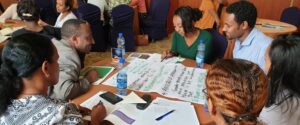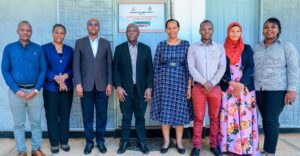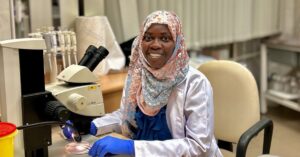
Low representation of women in academic publishing is only a reflection of lack of opportunities
Dr Sabina Bhattarai addressing an international conference on dermatology, 2016.
———————————————————————————————————————————
Dr Sabina Bhattarai is an Associate Professor and Vice Principal at Kathmandu Medical College, Sinamangal and Editor-in-Chief, Nepal Journal of Dermatology, Venereology & Leprology. The Journal is published in NepJOL, supported by INASP. We asked her about her experience in journal publishing in Nepal and the challenges she faces as a female journal editor.
– Interview by Thakur Amgai
When and how did you get into research and academic publishing?
I have been doing research for a long time now. It’s part of my job. All professionals in medical fields do research as part of their job. Apart from the regular medical practice of consulting patients and providing them treatment advice, I am also a teacher in a medical school, which requires me to do more research. Writing and editing is my passion. I remember enjoying writing even as a child. I used to participate and be awarded in writing contests at school. Perhaps, that’s the reason that my teachers and friends recommended me whenever opportunities to publish wall magazines, chart papers, or bulletins came up. This continued and even flourished when I passed high school and joined university. And here I am now – editing a professional journal.
That sounds very inspiring. How is it that you got such good opportunity as a female child at that time in a country where many parents marry off their daughters before they turn 18?
I was lucky in that matter. I was born and I grew up in central Kathmandu’s Baneshwar area in an educated liberal family. I got the same equal opportunity as my brother for education. My mother was a scientist at Nepal Agriculture Research Council. She always encouraged me to study. I got the best of education available in Nepal at that time. It was much later in life that I witnessed the unbelievable discrimination and harsh life girls were facing in the country.
Could you tell me about your current work in research publication and how you got there?
Currently, I am an Associate Professor of Dermatology & Venereology and Vice Principal at Kathmandu Medical College, Sinamangal. That’s my full time occupation. Apart from that, I am the Editor-in-Chief of Nepal Journal of Dermatology, Venerealogy & Leprology. We have formed a society of Dermatology, Venereology and Leprology in Nepal, of which I am a member. The society publishes this journal. I have been its chief editor for eight years now. Before that I used to contribute to it actively.
What challenges do you face as a female editor-in-chief of the journal?
There are challenges that all journal publishers in Nepal face irrespective of gender. I have experienced that external mobility is a bit challenging especially at odd hours. Having to go to the printing press and sit behind the layout designer looking for errors on the copy for long hours is not an easy job. But this challenge would be there even for a male. Being a female hasn’t affected the process and output of the journal in anyway.
In general women face a lot of challenge in workplaces in Nepal. However, the situation is quite the opposite where I work. Unlike many other academic institutions women are in the majority at Kathmandu Medical College. Both men and women at KMC are very supportive here.
Do you think that the gender roles in Nepalese society hinder women from coming forwards and succeeding in their academic career?
Of course! It is not just the academic career ̶ women in general face challenges in everyday life. I also face challenges despite being privileged and receiving equal opportunities in terms of my education and upbringing. For example, once I was driving on the road and a bus hit my car from behind and ran away. Although the bus driver had caused the accident, he would not accept fault. When he finally had to accept after eyewitness accounts he said, “how would someone who must have been doing dishes drive well?” That is the kind of perception of some men in the society even today.
Do you think the representation of women on editorial boards is changing?
There are very few women engaged in academic publishing but a lot has changed lately. You can see three of the top positions of the country – president, speaker of the house and the chief justice – are women. And 33% of the MPs are women. All women need is opportunity and a little bit of confidence.
I believe that an environment of collaboration and sharing among women writers and editors would benefit all. At present even the few women writers and editors in this industry are working on their own without any support.
Do you see gender bias in the composition of editorial boards in journals published in Nepal?
Of course, there are a low number of females in editorial boards of all journals (with a few exceptions). However, this bias did not originate at academic publishing level. It is just a proportional representation of other areas. What I mean is, the ratio of female to male who complete further studies is low. Then, the ratio of female to male who work in this industry is low. So, the number of women in journal publishing is proportional to the number of educated women in Nepal but disproportional to their total population.
What can an international institution like INASP do to promote career of female researchers?
Organizations like INASP could help bring women together on a platform to facilitate sharing and learning, which would ultimately help raise awareness and increase their confidence.
I have taken part in an INASP workshop on publishing earlier and have found it to be very useful. If there is an opportunity, I would love to be a part of INSAP gender programmes in Nepal which would help enhance career of female researchers/editors as we definitely need to have more representation of women in academic publishing and of course it is not that you cannot work as well as men, it’s just a matter of opportunity. ■

 Next Post
Next Post


